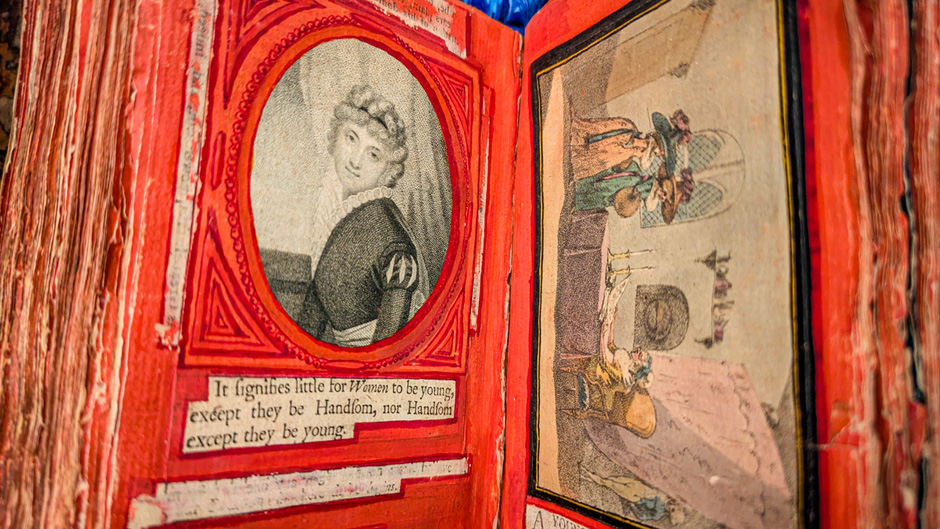In a recent webinar, librarian Robin Potter shared a range of examples from across the primary source collections housed within the University of Miami Libraries Special Collections and Archives.
The materials shown ranged from the 1700s to the 2010s and offered details of the daily lives and private perspectives of a socially and racially diverse grouping of voices and individuals.
Potter highlighted the unique perspectives and insights that these genres can offer and ways they can contribute to improved primary source literacy for students and researchers.
“The materials are rich documents of someone’s life and contain so much information—you really are able to get into someone’s mindset,” Potter said during the Aug. 29 event, adding that the books prompt viewers to wonder what was going on in the individual’s life, what they were trying to tell us, and what we might glean from it now in our own research.
Commonplace books date to Greek and Roman times when scholars and philosophers collected important thoughts, quotations, and ideas on tablets that functioned more as databases of information than journals.
“They contain epigrams and inspirational things that have been put together into one commonplace. They come from the times when people couldn’t always purchase copies of a book—this was a way to collect wisdom in one place,” Potter explained.
“Farrago,” a commonplace scrapbook, was assembled over decades purportedly by Richard Twiss, who lived in England and died there in 1821. The author described the scrapbook as “a collection of diverting jests, blundering bulls, smart repartees, quaint sayings, queer puns, merry adventures, and whimsical epigrams” that intended “to banish sorrow, cheer the heart, enliven the countenance, and quicken the spirits.”
One of the newest items shared in the presentation was a sketchbook by Andreyaa Hora, one of 15 sketchbooks in the Archives and Special Collections. Hora is a prolific artist who works in a variety of media and whose interests blend a range of influences across Afro-Brazilian, European, and Indigenous religious traditions.
“It’s a stunning, inspirational collection depicting the artistic process, with her real life coming through in glimpses,” Potter noted. Including proofs of woodcuts, collages of found materials, and sketches for finished works, these sketchbook/scrapbooks served as a private workspace for Hora, offering insight into “one person’s artistic process, a privileged space to be within, that can be very generative for us to see.”
The mishmash of materials in scrapbooks included quotes from songs or books, newspaper clippings, matrimonial advertisements, receipts from restaurants and shows, and much more. The collected memories help to construct identities and increasingly, librarians are interested in collecting these unique materials as ways to better represent the voices of a wider range of people within library collections.
The photo album of Beatrice Harris, a Black woman living in Daytona, Florida, in the early 1920s, offers a unique document of Florida history and its segregated society.
“The way the images interact with the handwritten captions adds humor and a special portrait of the compiler, her perspective on her community, the lives, personalities, education, and aspirational opportunities of her friends and family,” Potter said.
Individuals who may have unique sketchbooks, scrapbooks, or photo albums are invited to contact the library and possibly discuss having these materials preserved as part of the Archives and Special Collections.
“We’re trying to fill in these gaps, especially in the history of Florida, to reflect our full diversity in Miami as a crossroads of cultures, to tell a wider range of stories and better represent the voices of those whose stories aren’t as well-represented in our collections,” Potter said. “We want more voices to be heard.”
The presentation was part of University Libraries “Deep Dives into Special Collections” series.

